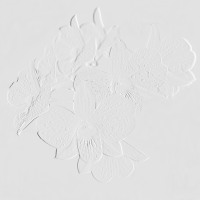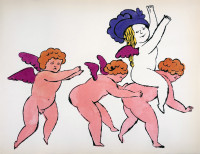
What is appropriation?
Appropriation in art involves using pre-existing images or objects with little or no modification. This technique has played a significant role across various art forms, including visual arts, music, performance, and literature. In visual arts, appropriation refers to the practice of adopting, sampling, recycling, or borrowing elements—or even entire forms—of existing visual culture, integrating them into new works to create meaning or critique.
Show All
- Show All
- Established
- Discoveries
A,B,C
ARTWORKS RELATED TO APPROPRIATION
Andy Warhol
Vanishing Animals: Sommering Gazelle, 1986
Drawing / Watercolor
Collage
Inquire For Price
Andy Warhol
Vanishing Animals: La Plata River Dolphin, 1986
Drawing / Watercolor
Collage
Inquire For Price
Andy Warhol
Vanishing Animals: California Condor, 1986
Drawing / Watercolor
Collage
Inquire For Price
Damien Hirst
All You Need Is Love Love Love, 2010
Limited Edition Print
Screen-print
USD 70,000 - 80,000
Andy Warhol
In The Bottom of my Garden IV.100A, 1956
Limited Edition Print
Mixed Media
Inquire For Price
Andy Warhol
25 Cats Name[d] Sam and One Blue Pussy, Cover, ca. 1954
Limited Edition Print
Offset Print
USD 13,200

Embossing is a technique used to create raised designs or images on a surface, typically paper. Artists achieve this effect by altering the shape of the paper, often by pressing it from the reverse side using a template and a tool like a sanded dowel. The result is a design with multiple levels of depth, giving a three-dimensional appearance.

Carborundum is the trademark name for silicon carbide crystals, an abrasive material commonly used in sandpaper, cutting tools, and grinding wheels. Originally, artists used carborundum for grinding lithography stones. In collagraph printmaking, it is applied to plates to create texture and tone gradients, adding depth and contrast to the prints.


















